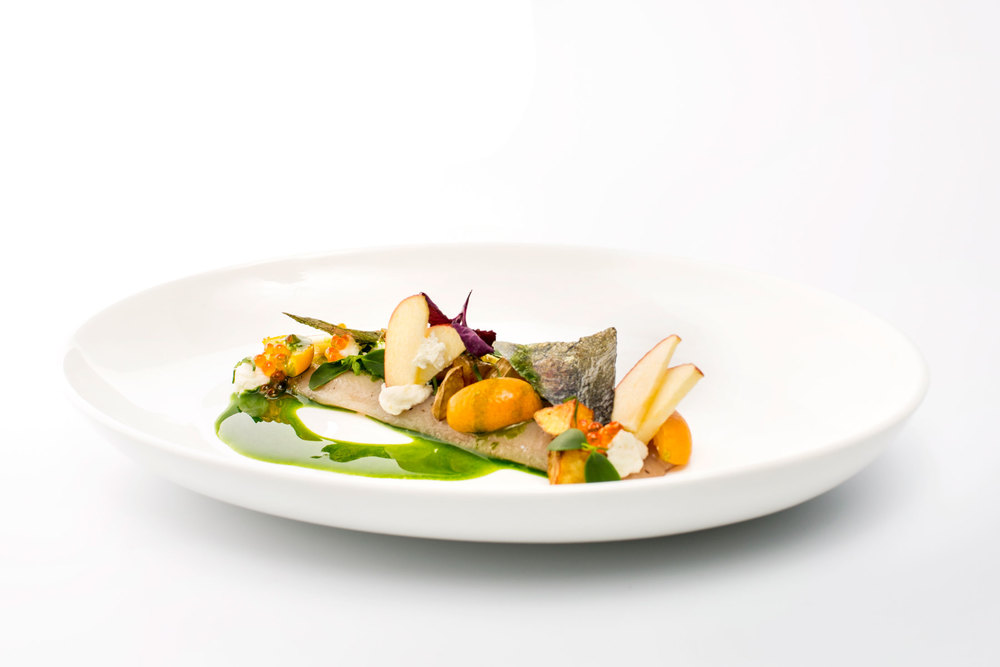When the owners of the Dolder Grand, an iconic historic hotel set on the fringe of the Adlisberg forest overlooking Zurich, decided to renovate and add an extension almost a decade ago, they smartly hired Norman Foster. The British architect restored much of the beauty of Jacques Gros’s original fin-de-siècle building and added two wings with stencil-cut aluminum facades, one of which is taken up by a soaring 43,000 square-foot spa with a black-tiled pool and a meditation room of golden mirrors. Taking a risk on a forward-thinking architect paid off: It remained respected among regulars and earned design cred with the younger generation. So when it came time to reinvent one of the Dolder’s restaurants, the owners turned to an equally modern creative thinker, the German conceptual artist Rolf Sachs.
Sachs was a more obvious choice than one would think. The polymath, who as a child spent winters in the Swiss Alps, has designed furniture and sets, made sculptures, and, most recently, put on a solo photography show at the Galerie Andrea Caratsch in St. Moritz. The hotel also houses a vast art collection that includes originals by Dalí and Anish Kapoor.
For Sachs, designing the angular dining room was all about the visual effect that references the Alps. “I didn’t think about the chef or the food,” he says. (In fact, it was chef à la carte Patrick Hetz who used the design as inspiration for his menu.)
Sachs started by dividing the restaurant into three spaces, each with a distinctive concept: one corner is entirely red with a back wall of cherry-colored felt; a central dining area has a constellation of furniture that includes chairs by Eero Saarinen and Jean Prouvé, as well as a self-designed couch made of layered Kvadrat felt; and then a section with a back wall of fleur de sel encased between two plates of glass over a neon sign that reads Das Salz in der Suppe—the salt in the soup. “It’s a German saying that means ‘it’s the spice of life that makes it worth living,’” Sachs says.
Above the main seating is an abstract web of mountaineering rope resembling a game of Cats Cradle; a solitary boulder hangs from it near the floor near a window—a nod to the nearby mountains in the distance. Sachs’s original idea was to hang hundreds of sleds meant to look like they were “flying across the ceiling.” It was one of the few ideas that the Dolder Grand owners asked that he rethink. He did it without a fuss. “I come up with new ideas rather quickly,” he says. “If the restaurant would have been opened a year later it would have looked completely different.” As Leonardo da Vinci once said, “Art is never finished, only abandoned.”
There’s a synergy between Rolf Sachs’s design, which references the rugged Swiss landscape, and the sustainably sourced menu I created for the restaurant: an ode to Alpine ingredients. (The origin of each one is declared on the menu.) This recipe celebrates the region’s heirloom produce and fresh trout, a staple of Switzerland that puts a focus on the homemade character of the food. It’s a dish that tells a story. Just like the aesthetic at Saltz.

